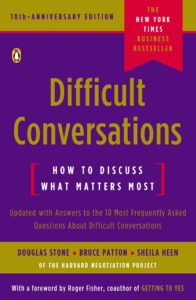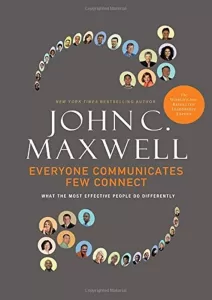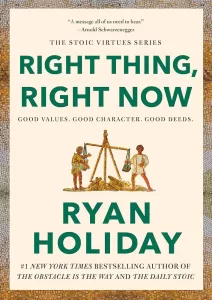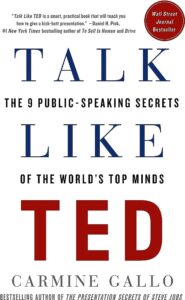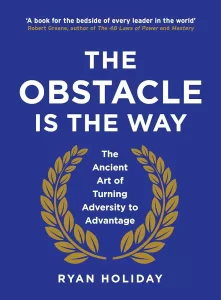Book Review: “Difficult Conversations”
Book: Difficult Conversations by Douglas Stone, Bruce Patton, and Sheila Heen
Reviewer: Bobby Powers
My Thoughts: 9 of 10
Stone, Patton, and Heen spent 15 years researching communication as part of the Harvard Negotiation Project. In Difficult Conversations, they share that research and provide a memorable mental model for how to navigate tough conversations in all facets of life. My wife and I have been discussing principles from this book this past week, and I've already been able to apply numerous principles in my daily life. This book is an incredible resource for anyone interested in improving their ability to listen effectively, give feedback, manage conflict, negotiate, and de-escalate tough situations. If everyone read this book, the world would be a much kinder place.
Takeaways from the Book
Difficult Conversations
- “A difficult conversation is anything you find it hard to talk about. Sexuality, race, gender, politics, and religion come quickly to mind as difficult topics to discuss, and for many of us they are...Anytime we feel vulnerable or our self-esteem is implicated, when the issues at stake are important and the outcome uncertain, when we care deeply about what is being discussed or about the people with whom we are discussing it, there is potential for us to experience the conversation as difficult.”
- “Surprisingly, despite what appear to be infinite variations, all difficult conversations share a common structure. When you’re caught up in the details and anxiety of a particular difficult conversation, this structure is hard to see. But understanding that structure is essential to improving how you handle your most challenging conversations.”
- “To make the structure of a difficult conversation visible, we need to understand not only what is said, but also what is not said. We need to understand what the people involved are thinking and feeling but not saying to each other. In a difficult conversation, this is usually where the real action is.”
- “The gap between what you’re really thinking and what you’re saying is part of what makes a conversation difficult.”
Sort Out the Three Conversations
- “It turns out that no matter what the subject, our thoughts and feelings fall into the same three categories, or ‘conversations.’ And in each of these conversations we make predictable errors that distort our thoughts and feelings, and get us into trouble.”
- The “What Happened?” Conversation - “Most difficult conversations involve disagreement about what has happened or what should happen. Who said what and who did what?”
- The Feelings Conversation - “Every difficult conversation also asks and answers questions about feelings. Are my feelings valid? Appropriate? Should I acknowledge them or deny them, put them on the table or check them at the door?”
- The Identity Conversation - “This is the conversation we each have with ourselves about what this situation means to us. We conduct an internal debate over whether this means we are competent or incompetent, a good person or bad, worthy of love or unlovable.”
- “Typically, instead of exploring what information the other person might have that we don’t, we assume we know all we need to know to understand and explain things.”
- “What I think about your intentions will affect how I think about you and, ultimately, how our conversation goes. The error we make in the realm of intentions is simple but profound: we assume we know the intentions of others when we don’t. Worse still, when we are unsure about someone’s intentions, we too often decide they are bad.”
- "As we argue vociferously for our view, we often fail to question one crucial assumption upon which our whole stance in the conversation is built: I am right, you are wrong. This simple assumption causes endless grief."
- “In situations that give rise to difficult conversations, it is almost always true that what happened is the result of things both people did--or failed to do...Talking about blame distracts us from exploring why things went wrong and how we might correct them going forward.”
The “What Happened?” Conversation
- “Stop arguing about who’s right: explore each other’s stories.”
- “We think they are the problem. They think we are the problem. We each make sense in our story of what happened. Arguing blocks us from exploring each other’s stories. Arguing without understanding is unpersuasive.”
- “Arguing inhibits our ability to learn how the other person sees the world.”
- “People almost never change without first feeling understood.”
- “To get anywhere in a disagreement, we need to understand the other person’s story well enough to see how their conclusions make sense within it. And we need to help them understand the story in which our conclusions make sense.”
- “There’s only one way to come to understand the other person’s story, and that’s by being curious. Instead of asking yourself, ‘How can they think that?!’ ask yourself, ‘I wonder what information they have that I don’t?’ Instead of asking, ‘How can they be so irrational?’ ask, ‘How might they see the world such that their view makes sense?’ Certainty locks us out of their story; curiosity lets us in.”
- “Don’t worry about accepting or rejecting the other person’s story. First work to understand it. The mere act of understanding someone else’s story doesn’t require you to give up your own.”
The Feelings Conversation
- “Difficult conversations do not just involve feelings, they are at their very core about feelings. Feelings are not some noisy byproduct of engaging in difficult talk, they are an integral part of the conflict."
- “Feelings are too powerful to remain peacefully bottled. They will be heard one way or another, whether in leaks or bursts. And if handled indirectly or without honesty, they contaminate communication.”
- “The two hardest (and most important) communication tasks in difficult conversations are expressing feelings and listening.”
- “Feelings are more complex and nuanced than we usually imagine. What’s more, feelings are very good at disguising themselves. Feelings we are uncomfortable with disguise themselves as emotions we are better able to handle; bundles of contradictory feelings masquerade as a single emotion; and most important, feelings transform themselves into judgments, accusations, and attributions.”
- Are you sharing your feelings or your attributions?
The Identity Conversation
- “The Identity Conversation looks inward: it’s all about who we are and how we see ourselves. How does what happened affect my self-esteem, my self-image, my sense of who I am in the world?”
- “The biggest factor that contributes to a vulnerable identity is ‘all-or-nothing’ thinking: I’m either competent or incompetent, good or evil, worthy of love or not. The primary peril of all-or-nothing thinking is that it leaves our identity extremely unstable, making us hypersensitive to feedback. When faced with negative information about ourselves, all-or-nothing thinking gives us only two choices for how to manage that information, both of which cause serious problems. Either we try to deny the information that is inconsistent with our self-image, or we do the opposite: we take in the information in a way that exaggerates its importance to a crippling degree.”
- “Complexify your identity...This means moving away from the false choice between ‘I am perfect’ and ‘I am worthless,’ and trying to get as clear a picture as you can about what is actually true about you.”
- “Indeed, a self-image that allows for complexity is healthy and robust; it provides a sturdy foundation on which to stand.”
Distinguish Blame from Contribution
- “Blame is about judging, and looks backward...When we blame someone, we are offering them the role of ‘the accused,’ so they do what accused people do: they defend themselves any way they can.”
- “Contribution is about understanding, and looks forward...Contribution is useful when our goal is to understand what actually happened so that we can improve how we work together in the future.”
- “Focusing on blame is a bad idea because it inhibits our ability to learn what’s really causing the problem and to do anything meaningful to correct it.”
- “Finding your contribution doesn’t in any way negate the other person’s contribution...Recognizing that everyone involved in a situation has contributed to the problem doesn’t mean that everyone has contributed equally. You can be 5 percent responsible or 95 percent responsible--there is still joint contribution.”
- “By identifying what you are doing to perpetuate a situation, you learn where you have leverage to affect the system.”
- “One of the best ways to signal that you want to leave behind the question of who’s to blame is to acknowledge your own contribution early in the conversation.”
Have a “Learning Conversation”
- “Changing our stance means inviting the other person into the conversation with us, to help us figure things out. If we’re going to achieve our purposes, we have lots we need to learn from them and lots they need to learn from us. We need to have a learning conversation.”
- “In addition to your story and the other person’s story, every difficult conversation includes an invisible Third Story. The Third Story is the one a keen observer would tell, someone with no stake in your particular problem...The trick is being able to get two people with different stories to sign on to the same description of what is going on.”
- “You can’t move the conversation in a more positive direction until the other person feels heard and understood...Persistence in a difficult conversation means remaining as stubbornly interested in hearing the other person’s views as you are in asserting your own.”
- “Paraphrasing lets the other person know they’ve been heard. Usually the reason someone repeated himself or herself in a conversation is because they have no indication that you’ve actually taken in what they’ve said. If you notice that the other person is saying the same thing over and over again, take it as a signal that you need to paraphrase more.”
- “We can acknowledge the power and importance of the feelings, while disagreeing with the substance of what is being said.”
- “Say what you mean: don’t make them guess. One way we often skirt sharing things that are important to us is by embedding them in the subtext of the conversation rather than simply stating them outright. Don’t rely on subtext.”
Think you’d like this book?
Other books you may enjoy:
- Crucial Conversations by Kerry Patterson, Joseph Grenny, Ron McMillan, and Al Switzler
- Fierce Conversations by Susan Scott
- Radical Candor by Kim Scott
Other notable books by the authors:
Want to become a stronger leader?
Sign up to get my exclusive
10-page guide for leaders and learners.
